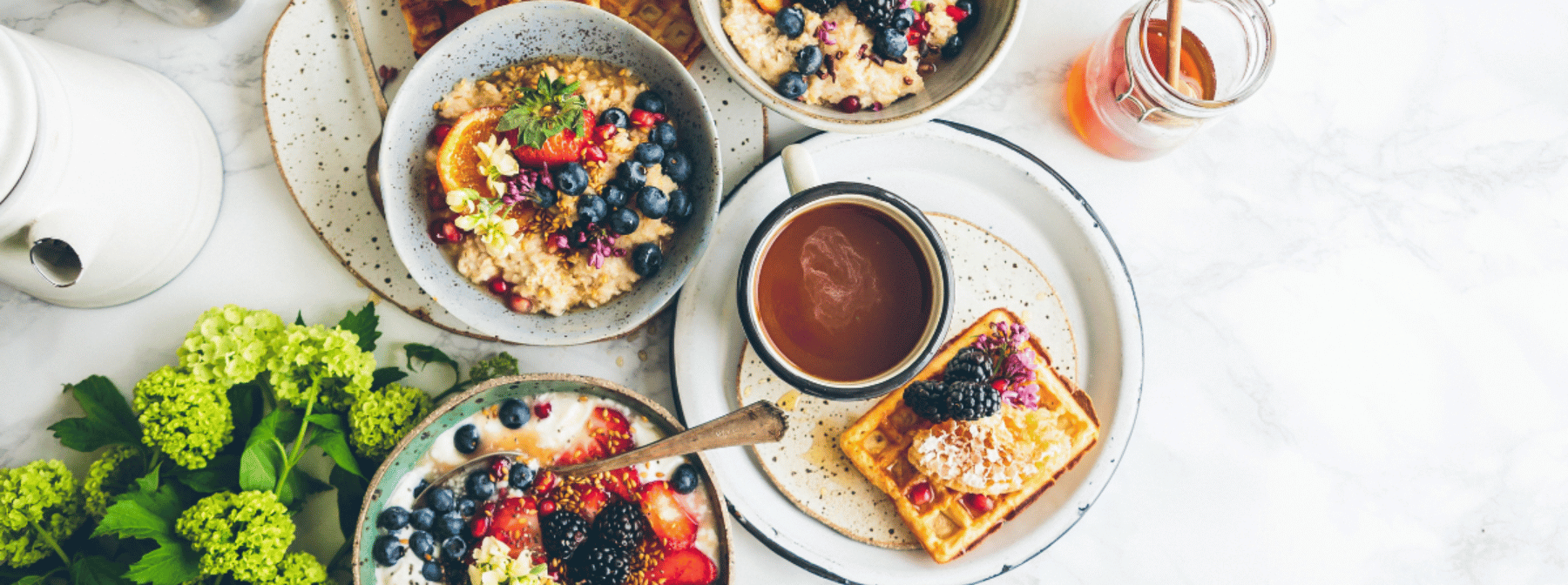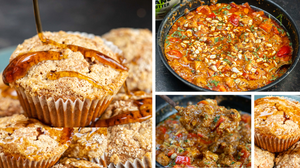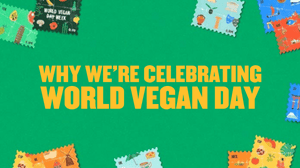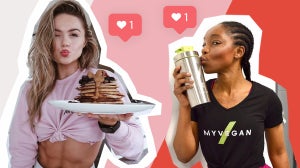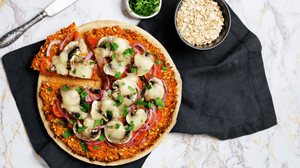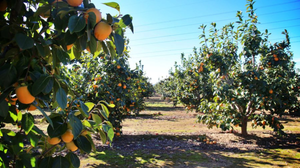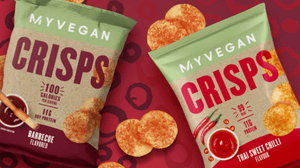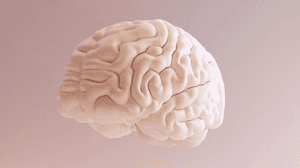
When it comes to a healthy diet, there is no one-size-fits-all diet. Nutritional needs vary depending on different factors including age, height, sex, activity level…. The list goes on!
Generally though, most health organisations would consider a healthy diet to be one that contains a balance of macronutrients, is low in saturated fat and added sugars, and high in micronutrient dense fruit and vegetables. In addition, a healthy diet should be supplemented with regular exercise; at least 2.5 hours per week of moderate intensity exercise is recommended to maintain good health.
- What Is A Healthy Diet?
- Why Is Healthy Eating Important?
- The Basics Of Healthy Eating
- How To Start Eating Healthy
- Tips For Healthy Eating
- Eating Healthy On A Budget
- FAQs
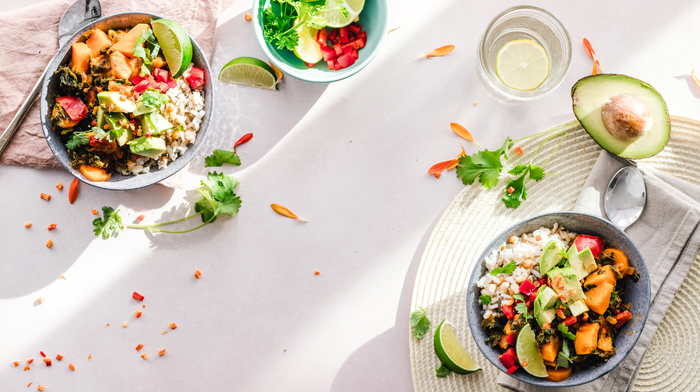
What Is A Healthy Diet?
According to the World Health Organisation, health is defined as ‘a state of complete physical, mental and social well-being, and not merely the absence of disease’. So, it makes sense that a healthy diet is one that supports good health. Words that are generally associated with healthy diets include ‘balanced’ and ‘moderation’, and these aspects are key; balance is needed to make a diet enjoyable and sustainable, without having a negative impact on physical, mental, or social wellbeing.
There are a few key components to having a healthy diet - these can be broken down into macronutrients and micronutrients. Macronutrients are the predominant dietary nutrients, and include protein, fat and carbohydrates. Macronutrients are a significant source of energy, so are needed in larger amounts. In contrast, micronutrients are needed in smaller amounts, but are still essential to maintain good health. Vitamins and minerals are examples of micronutrients.
On average, a woman requires around 2000 calories (kcals) per day; men require 2500 kcals per day. Calories are a unit of energy and only form part of the picture when it comes to eating a healthy diet. Just as important as calories is the nutrient density of a diet – both macro and micronutrients.
Why Is Healthy Eating Important?
Healthy eating is important to help us feel our best - a healthy diet and lifestyle is one that enables us to feel energised and live life to the full. A healthy diet is one that not only helps to maintain health status, but may also help to prevent the development of chronic conditions and poor health.
The Basics Of Healthy Eating
When building a healthy plate, try to include each of the macronutrients (protein, carbohydrates, fats), along with at least 2-3 portions of fruit or vegetables. However, don’t panic if you don’t manage this at every meal! Keep reading to understand more about the benefits of each macronutrient.
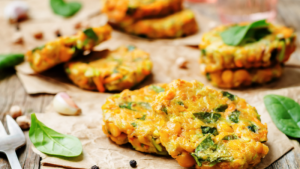
Protein
Protein is made up of smaller molecules called amino acids; 9 of these amino acids can’t be synthesised in the body and must be obtained through dietary sources. There are 20 amino acids in total. Protein is essential for cellular repair, and for muscle mass repair and growth. This is especially important for people that workout regularly however, protein is also an important part of a healthy diet regardless of activity level.
Protein is found in almost all animal-based products (meat, fish, eggs) however, many plant-based foods can also be used as a source of protein. Adults need a minimum of 0.75g of protein per kilogram of body weight; most adults will need more than this, so a good number to aim for is 1-1.5g of protein per kilogram of body weight.
High-Protein Foods
Tofu: 10-12g protein per 70g serving.
Tempeh: 15g of protein per 70g serving.
Chickpeas: 7-8g of protein per serving (around ½ a can).
Lentils: 6-7g of protein per serving (around ½ a can).
Edamame beans: 10g of protein per 80g serving
Carbohydrates
Carbohydrates are the preferred energy source for the body and the brain. There are two main types of carbohydrate: simple and complex.
Simple carbohydrates are foods that contain sugars that don’t require much processing and act as a quick energy source. Examples include fruit sugars, sugar syrups and table sugars. Complex carbohydrates, like high-fibre foods and wholegrains, offer a more slow-release energy.
Healthy Carbs
Oats: Oats are a great energy source and can be eaten raw or cooked. Oats contain a type of fibre called beta-glucan which can help to support heart health. Ground oats can also be used as an alternative to wheat flour in baking.
Quinoa: Quinoa is not only a source of carbohydrates, but also an excellent source of protein. It is a naturally gluten-free grain, so suitable for those with coeliac disease or gluten intolerance. Quinoa can be used on its own, or mixed with couscous or oats to provide additional texture.
Potatoes: Potatoes are low calorie, low fat and are a source of both carbohydrates and fibre. Sweet potatoes have additional benefits, as its bright colours are associated with increased quantities of vitamin A.
Wholegrain breads: Opting for wholegrain or seeded breads increases both the fibre content and the nutrient density. Opting for wholegrain bread and cereal products is typically considered healthier than white breads and cereals which have been heavily processed. However, if you don’t like brown bread, that’s okay! Everything in moderation is an important aspect of a balanced diet.
Rice: One of the good things about rice is that it’s easy to incorporate into almost any diet! While some carbohydrates can cause digestive discomfort due to their high fibre content, white rice is easy to digest and works well in a variety of meals.
Fats
The 1970’s was the start of low-fat diets. However, fat is actually an essential nutrient, which can contribute towards healthy skin and hair. Not only that, but fat is needed for joint and eye health. Omega fatty acids are essential for optimum health, especially omega-3 which has to be obtained through the diet.
Unsaturated fats are considered to be healthy fats; we should be trying to reduce intake of saturated fat and trans-fat, as these can have a negative impact on health.
Sources Of Healthy Fats
Avocado: Half a medium avocado contains just under 20g of total fat. Over half of this is made up of unsaturated fats.
Nuts & nut butters: Different nuts (and nut butters) contain varying fat contents, mostly consisting of unsaturated fats. On average, a 30g portion of nuts contains 15g of total fats and a 30g portion of nut butter contains around 16 total fats.
Seeds: Depending on the seeds, fat content ranges from 5-12g per 15g serving. Seeds are a source of polyunsaturated fats.
Tahini: Containing predominantly unsaturated fats, one tablespoon of tahini has an 8.8g total fat content.
Coconut milk: 100ml (1/4 can) of coconut milk contains approximately 18g of fat – this is mostly saturated fat and medium chain triglycerides (MCT).
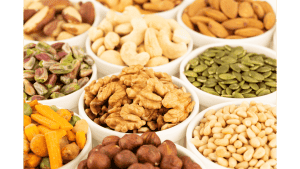
Fibre
Most adults in the UK don’t meet the recommended 30g of fibre per day. Fibre is needed for a healthy gut; eating at least 30 types of plant-based fibres as week can help to nourish the gut microbiome (the bacteria living in our gut).
Fibre is also important for a healthy bathroom routine, as fibre is needed to provide bulk for stool and help it move through the gut. Furthermore, fibre is also important for heart health, as fibre can encourage removal of ‘bad’ cholesterol from the body.
High-Fibre Foods
Dried fruits: Unlike fresh fruits, dried fruits have had their water content removed, leaving a high percentage of sugar and fibre. Dates can be soaked and blended to form a natural, high-fibre alternative to caramel.
Seeds: Seeds are high not only in protein and fat, but also in fibre. Flaxseeds and chia seeds contains a type of soluble fibre which helps to draw water into the gut – this is important for soft bowel movements to occur. This type of fibre may also help to remove ‘bad’ cholesterol and promote feelings of fullness.
Oats: Oats, like seeds, contain soluble fibre, especially beta-glucan. This type of fibre is associated with improved heart health. Oats, like many other grains, also contain insoluble fibre, which is needed to provide bulk for stools. This helps to promote gut movement and avoid constipation.
Wholegrains: Wholegrain breads and grain products (rice, pasta, etc) have already been mentioned as a source of healthy carbohydrates. Wholegrains are typically higher in fibre as they contain the entire grain; the grain shell gives wholegrain products their characteristic dark colour. Removal of this shell reduces the fibre content of the food.
Cruciferous vegetables: This family of vegetables includes broccoli, cauliflower, Brussel sprouts, and cabbage. The high fibre content of these vegetables can sometimes cause digestive discomfort and increased wind; if this occurs, try eating cruciferous vegetables cooked rather than raw. These types of vegetables are high in a variety of micronutrients including iron, calcium, and vitamin C.
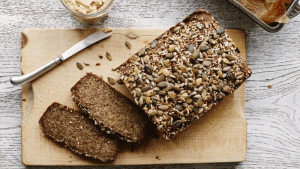
Water
The human body is made up of at least 55-60% water! The balance of water within the body is closely regulated by the kidneys and an imbalance of water can have some negative health consequences. For example, being dehydrated can lead to reduced exercise performance, poorer temperature regulation, and increased thirst.
The majority of water is obtained via drinking fluids however, some foods also contain water which contribute towards your total intake.
High Water Content Foods
Watermelon: The clue with this one is in the name! Watermelon is made up of over 90% water, which makes it a hydrating and refreshing snack. Most melon varieties are also high in soluble fibre, which balances the high sugar content.
Cucumber: Despite being commonly used in savoury dishes, cucumbers are actually a fruit. They contain over 95% water, and are a source of fibre, calcium and magnesium. Pair chopped cucumber with homemade hummus to make a nutrient dense, high fibre, heart-healthy snack.
Tomatoes: These fruits contain are made up of over 95% water. They are also an excellent source of vitamin A.
Oranges: When juiced, this fruit makes a naturally refreshing drink. This sweet and tangy fruit contains over 85% water and is high in vitamin C; a micronutrient that is important for its anti-inflammatory and immune-boosting properties. Adding a slice of orange to your water can provide flavour and boost vitamin content of your daily drink.
Orchard fruits: Apples and pears are usually available year-round and have a water content of over 85%. The skin of these fruits is high in fibre, so leave these on for an additional fibre boost.
How To Start Eating Healthy
Like most dietary changes, eating healthily can be overwhelming. However, if you are eating a vegan diet, hopefully you are already incorporating plenty of fruit, vegetables, and high-fibre foods. However, it can be easy to fall into a trap of eating processed foods and ready meals regularly.
Here are 6 tips to help you start your healthy eating journey:
1. Understand nutrition labels
In the UK, most foods have a traffic light labelling system. This can be helpful for understanding which foods are high in fat, sugar or salt – nutrients that are not associated with health benefits. Look for foods with green traffic light labels, as these are likely to be lower in harmful nutrients.
2. Focus on ‘adding’ rather than taking away
Feeling restricted can make it difficult to follow a new diet or lifestyle routine. Instead of focusing on what you’ve removed (e.g. processed foods and refined sugars), focus on what you are adding (increased water and fibre). To take this even further, focus on the benefits these additional food groups bring!

3. Make changes gradually
Trying to change everything at once can lead guilt if you aren’t able to complete these examples. Make changes that are achievable for you; for example, don’t try to attend the gym 5-6 days a week if realistically you can only attend on 2-3 days.
4. Stay hydrated
Dehydration can have a negative impact on energy levels, skin health, and digestion. Try to drink at least 1.2 litres of water per day, but if this is difficult then make sure to include foods that contain a high percentage of water.
5. Cook from scratch
Cooking at home allows you to control the amount of sugar, salt and saturated fats that go into the final dish. Conversely, home cooking also allows you to increase vegetables (and fibre) portions, the quantities of which can be low in pre-prepared meals.
6. Be patient
Remember that it would have taken months – years to establish poor health habits and changing these is unlikely to be a quick process. If you don’t see results straight away, keep going!
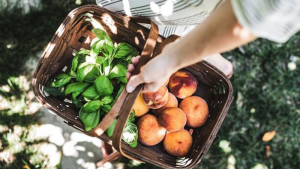
Tips For Healthy Eating
Feel like you have the groundwork in place for healthy eating, but are getting bored? Check out these 6 lifestyle tips to help keep you motivated.
1. Include variety
A boring diet won’t be sustainable long-term and can lead to you ‘falling of the wagon’. Cooking one new dish a week, or eating out a new restaurant will help to prevent boredom and may even inspire you to keep going.
2. Make sure to include protein
Protein is important to maintain energy levels, fuel your workout, and prevent post-workout fatigue. Protein is also important as it helps increase feelings of fullness. If you aren’t feeling satisfied or energised after meals, try increasing the portion of protein.
3. Supplement appropriately
It is advisable to supplement with vitamin B12 when following a vegan diet, as this nutrient can be hard to come by in plant-based foods. Vitamin D supplementation may also be useful in the winter months to help maintain energy levels.

4. Track your progress
Tracking your progress may help you to realise quite how far you’ve come in your healthy eating journey! Whether your goal is weight loss, increase muscle tone, or generally just feel better in yourself, find a way of tracking your progress that works for you. For some people this could be using the scales whereas regular photo updates may be helpful for other people.
5. Avoid restriction
Feeling restricted can lead to boredom and a lack of motivation. Completely eliminating certain foods or food groups can be detrimental health, so remember that a healthy diet is a balanced diet!
6. Buddy up
Find a friend or family member that is also keep to persue a healthier lifestyle. Having someone to hold you accountable can help you stay on track – it may also make the process more enjoyable.
Eating Healthy On A Budget
Eating healthily doesn’t mean that your weekly grocery shop has to cost the earth. Vegan and plant-based diets naturally lend themselves to being budget-friendly. Focusing on inclusion of wholegrains, beans, legumes, fruit and vegetables will help to keep a plant-based way of eating healthy.
Need some budget-friendly and healthy meal ideas? Check out this article:
Talk To Your Nutritionist
This article is for educational purposes only and should not be used as a substitute for medical advice. If you have any concerns about your health, including weight and diet, then please contact your GP or other relevant healthcare professional.
Take Home Message
In summary, a healthy diet is one that focuses on including all the macronutrients. High micronutrient content in the form of fruits and vegetables is also important for a healthy diet. Remembering that health is not only physical, but also mental wellbeing – enjoy that doughnut or cake every once in a while! Health is about balance, not about restriction.
For more expert advice, plant-based recipes, and exclusive offers, sign up to the Myvegan mailing list.

FAQs
What is the meaning of healthy eating?
Healthy eating is a way of eating that supports not only physical health, but also mental health; it should also be a style of eating that is sustainable with your current lifestyle.
What happens to your body when you start eating healthy?
Eating healthily may improve various aspects of health and are different for everyone. Examples include improved gut health, improved skin health, improved energy levels and improved mental health.
How many calories should I eat a day?
Men require around 2500 calories a day, and women require around 2000 calories per day. However, number is not an exact science, and energy needs will vary depending on age, activity level and health goals.
What are some good healthy eating habits?
Including all of the macronutrients (protein, fats, carbohydrates) in each meal will help to keep your plate balanced. The addition of plenty of fruit, vegetables and water (including water-rich foods) will help to complete a healthy diet. However, don’t stress if every meal isn’t perfect!
How do I start a healthy lifestyle?
Rather than trying to overhaul your diet and lifestyle, focus on additions you can make. For example, adding an extra portion of fruit or vegetables at each meal, or making an effort to drink more water. A diet and lifestyle that feels restrictive is likely to be unsustainable long-term.
World Health Organisation. Constitution [internet]. World Health Organisation. 1948. Available from:
https://www.who.int/about/governance/constitution
NHS. Eating a balanced diet [internet]. NHS. July 2022. Available from:
https://www.nhs.uk/live-well/eat-well/how-to-eat-a-balanced-diet/eating-a-balanced-diet/
British Dietetic Association. Healthy eating [internet]. British Dietetic Association. Aug 2020. Available from: https://www.bda.uk.com/resource/healthy-eating.html
NHS. Physical activity guidelines for adults 19-64 [internet]. NHS. Aug 2021. Available from: https://www.nhs.uk/live-well/exercise/exercise-guidelines/physical-activity-guidelines-for-adults-aged-19-to-64/
NHS. What should my daily intake of calories be? [internet]. NHS. Oct 2019. Available from: https://www.nhs.uk/common-health-questions/food-and-diet/what-should-my-daily-intake-of-calories-be/#:~:text=Generally%2C%20the%20recommended%20daily%20calorie,women%20and%202%2C500%20for%20men.
British Nutrition Foundation. Protein [internet]. British Nutrition Foundation. Jun 21. Available from: https://www.nutrition.org.uk/healthy-sustainable-diets/protein/?level=Health%20professional
NHS. How to get more fibre into your diet. NHS. July 2022. Available from: https://www.nhs.uk/live-well/eat-well/digestive-health/how-to-get-more-fibre-into-your-diet/
Wang Y, Liu Z, Han Y, Xu J, Huang W, Li Z. Medium Chain Triglycerides enhances exercise endurance through the increased mitochondrial biogenesis and metabolism [internet]. PLoS one. 2018; 13(2): e0191182. Available from: https://doi.10.1371/journal.pone.0191182
Sharma V, Sharma L, Sandhu K. Cucumber (Cucumis sativus L). In: Nayik, G.A., Gull, A (eds) Antioxidants in vegetables and nuts – properties and health benefits. Springer, Singapore. https://doi.org/10/1007/978-981-7470-2_17
Popkin B, D’Anci K, Rosenberg I. Water, hydration, and health. Nutr Rev. 2010; 68(8): 439-458.
Kalja P, Sharma A, Sood D. Flaxseed – a potential functional food source. J Food Sci Technol. 2015; 52(4): 1857-1871
Jaarsma C. 10 water-rich foods to help you stay hydrated [internet]. BUPA. May 21. Available from: https://www.bupa.co.uk/newsroom/ourviews/ten-water-rich-foods-hydration#:~:text=Tomatoes%2C%2095%25%20water,up%20of%20about%2095%25%20water.
British Nutrition Foundation. The science of hydration [internet]. British Nutrition Foundation. Jun 21. Available from: https://www.nutrition.org.uk/healthy-sustainable-diets/hydration/
Foods Standards Agency. McCance and Widdowson’s the composition of foods. 6th Ed. Cambridge: Royal Society of Chemistry.

